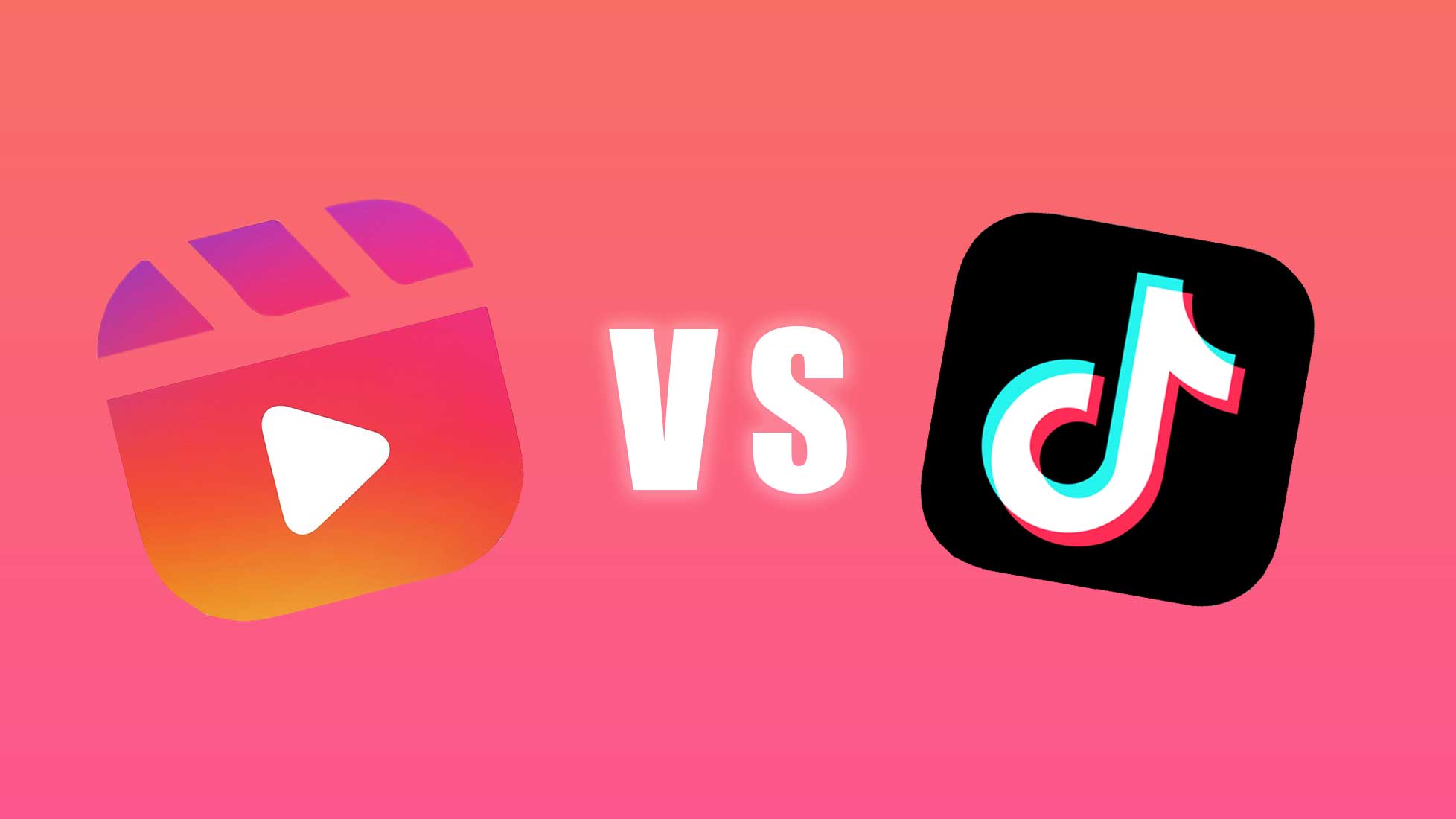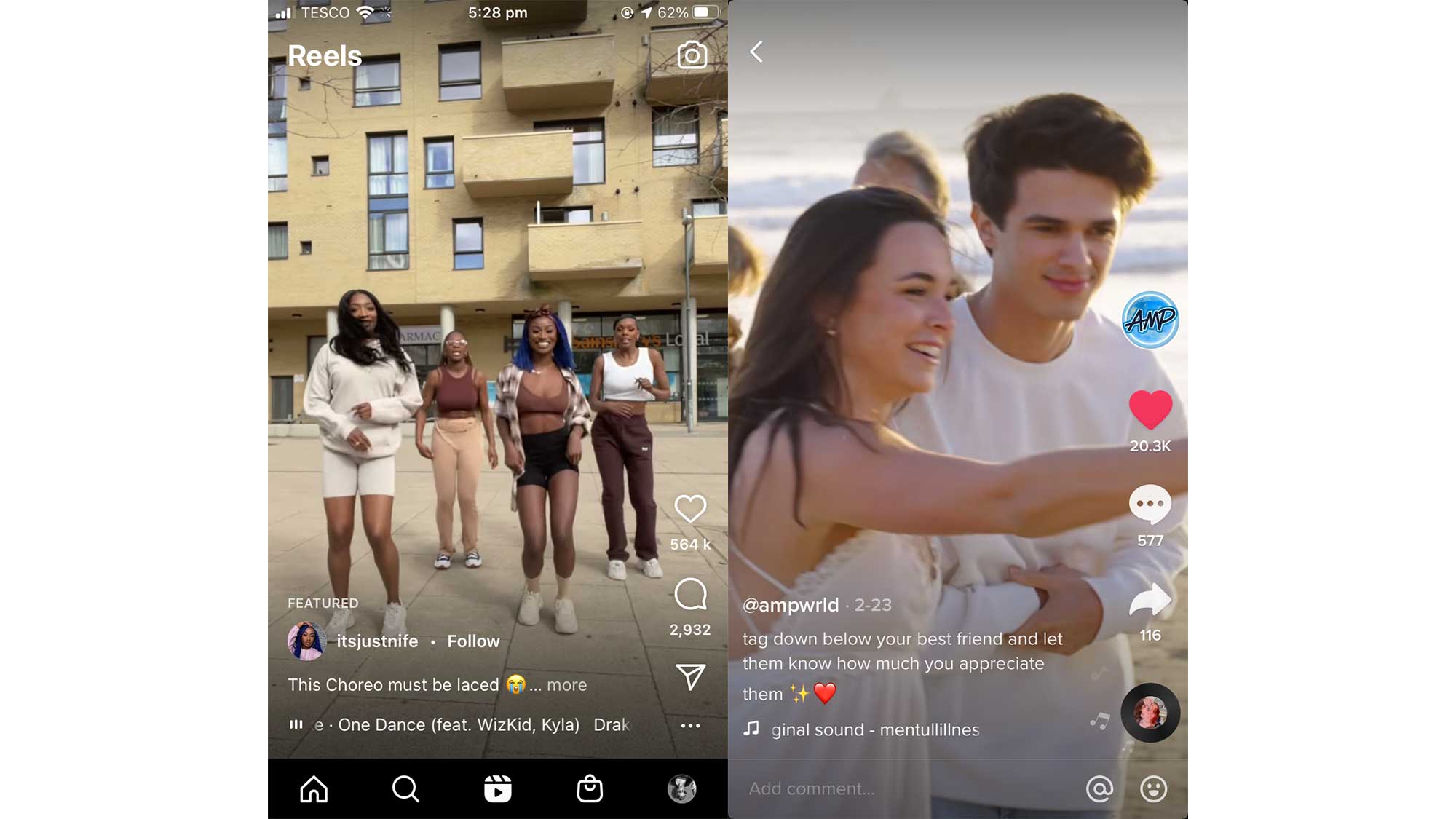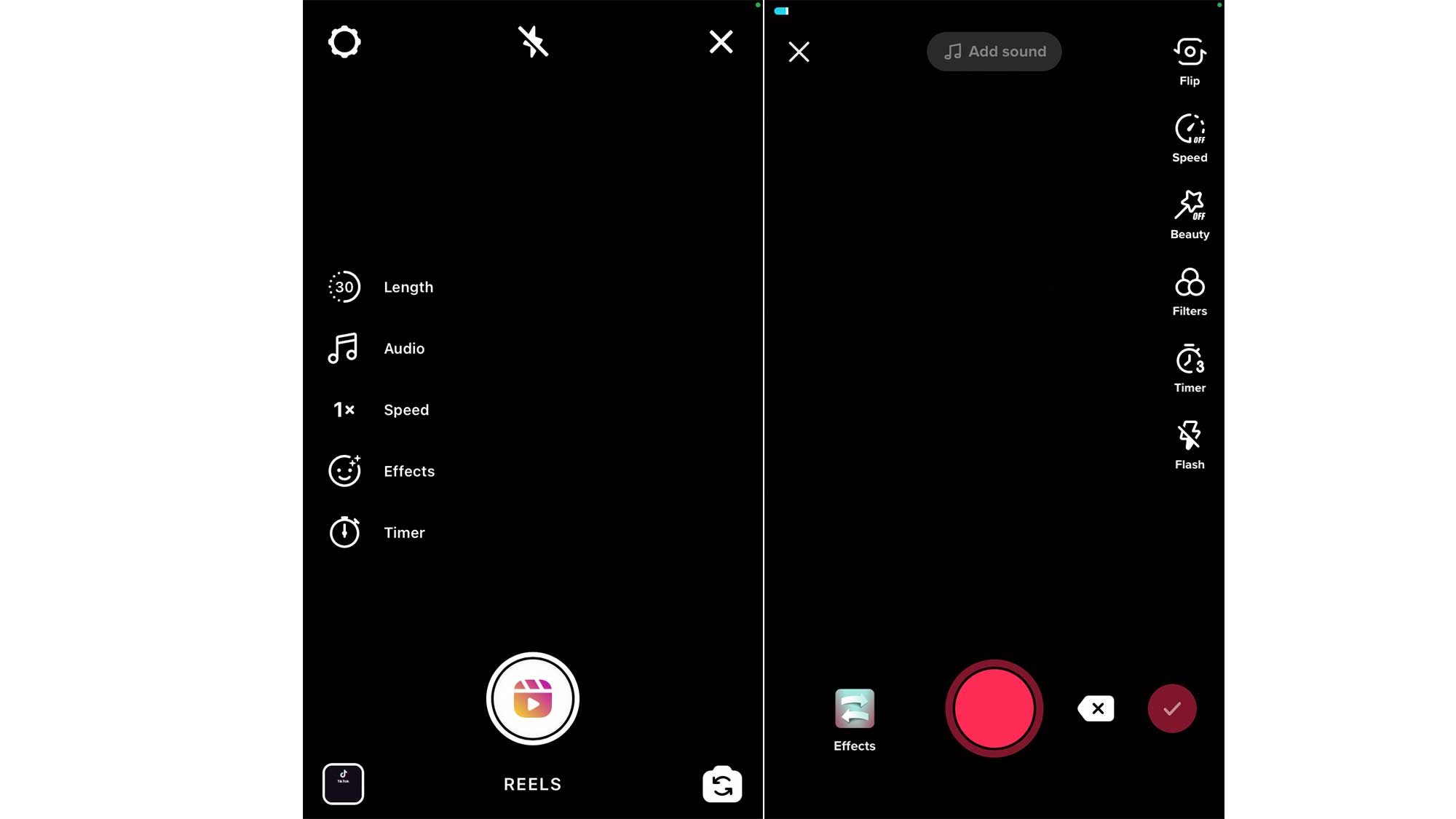Instagram Reels vs TikTok: Which should you be using?
Discover the differences between Reels vs TikTok.

Reels vs Tiktok is a fairly new battle. Since the success of TikTok has spread from Gen Z to a variety of age groups, Instagram has launched Reels in an attempt to take back the audience it lost to its adversary, which is still steadily rising in popularity.
Now that Reels has been growing for a good few months, Instagram has had the time to flesh out its interface and tools - to match TikTok or outshine it. Has it achieved that yet or is it just a carbon copy of the concept? And has TikTok made any changes to counteract this new opponent? We discuss all of this in more in our guide to the two video platforms.
For more Insta tips and tricks, see our guide to how to change the font in your Instagram bio, how to make money on Instagram. Also see our general guide to TikTok and how to use green screen on TikTok.
01. Reels vs TikTok: Video length
Although both TikTok and Reels are based around the same idea, the 30 second limit on Reels gives it quite a different premise. It limits users to snappy, simple messages and how-tos, while the 60 seconds available on TikTok leaves room for mini series which stretch over several parts. This is worth noting as a tactic to increase engagement and profile views. A one minute video is already a tiny amount of time to condense a creative idea into, but it does allow just enough room to adapt and experiment within it.
02. Reels vs TikTok: Audio

TikTok’s sound library is not limited to music from the charts. Its users are constantly creating new sounds that sometimes become part of new trends, and has even given early success to indie music artists. Gen Z often tries to ‘hop on’ to these fast paced trends as quickly as possible in order to grow their views and become one of the success stories awarded fame via a viral TikTok audio.
Make no mistake, Reels has a wide variety of audio options, but in comparison to TikTok, it’s not an extensive library. Much of the audio used on Reels is brought over from TikTok videos. This system works well, but still means Reels and its audience are reliant on TikTok to make a video which will do well in the algorithm.
Instagram is not a music-based platform. By nature it has tighter copyright restrictions because it is based around artists sharing their original work, while TikTok was built on the premise of using copyrighted music. Instagram’s attempt to conflate two very different business models ends up clashing.
Get the Creative Bloq Newsletter
Daily design news, reviews, how-tos and more, as picked by the editors.
TikTok is more about a generation sharing ideas to create entertainment and unifying in jokes, while Reels is just Instagram’s way of keeping up with TikTok and trying to win back some of their audience.
Reels vs TikTok: Video editing

TikTok’s trends often come from specific video effects. Reels only has the filters used on Instagram Stories, and does not have many effects compared to TikTok. For users who are trying to keep up with trends, specific effects are sometimes necessary. One of TikTok’s most valuable features for some is the touch up button, which applies a softening effect to your face.
The Reels equivalent is not quite as powerful, but does offer filters that include better touch up features. The downside to this is that filters and effects are not separated on Reels - they come under the same umbrella, which means that you can only choose one and therefore have less versatility in the final look of your video.
TikTok sometimes has an option to save videos to your camera roll, which could be off-putting for creatives. The videos are however saved with a watermark and credit to the user at the end, protecting the content to a certain extent. There is not yet an option to save a Reel, which means that the that work is arguably more protected, inline with Instagram’s original business model. Instagram has always been about image and presentation, so an advantage to Reels is that a thumbnail for a video can be chosen from your camera roll, while on TikTok it must be a frame from the video itself.
Reels vs TikTok: Analytics
Instagram has always had a difficult to navigate and changeable algorithm, and Reels has not yet developed one which is as clear or effective as TikTok’s for this type of content. Part of TikTok’s appeal to Gen Z and Millenials is how easy it is to blow up and instantly become a monetised influencer. TikTok also offers more in-depth insights into your audience, while Reels does not offer anything extra to Instagram’s ordinary analytics.
Reels vs TikTok: Paid advertising
TikTok includes both advertisements and sponsored content. Sponsored content is usually offered by larger companies, and therefore exists more for the sake of helping the influencers grow rather than the companies. TikTok advertisements are personalised to feeds, while a great advantage of Reels for its audience is that it does not feature advertisements.
Influencers do still have an option of adding a tag to a post which lets the audience know that the content is sponsored. This is a lot more user friendly, and probably made possible because of the advertising capabilities in other areas on Instagram.
Reels vs TikTok: Which one should you use?
TikTok is without a doubt the superior platform for short video content. Reels is a clear attempt from Instagram to win back its audience, but definitely a useful aspect of the platform that is worth getting the most out of.
Engaging moving image is the future of entertainment, and at this point TikTok is the place to explore it. But if you are looking for new ways to expand your Instagram account, then Reels is a great way to add some depth to your brand presentation in short video form. Don’t forget that if you are new to TikTok, you can point your already established Instagram following to your account by reposting the watermarked version of your videos on Reels.
Do not be afraid to expand and use both platforms to your advantage. They can definitely be bounced off each other in ways that can be incredibly advantageous to your business or personal brand.
Read more:

Thank you for reading 5 articles this month* Join now for unlimited access
Enjoy your first month for just £1 / $1 / €1
*Read 5 free articles per month without a subscription

Join now for unlimited access
Try first month for just £1 / $1 / €1

Mabel is a freelance writer, artist and filmmaker. When she's not writing about the arts industry, books or culture, she's working on writing and illustrating her stories or developing experimental filmmaking projects. Working in journalism, poetry, documentary-filmmaking, illustration and fiction, storytelling is at the heart of what she does. She started writing articles in online magazines when she was seventeen. After training at the BFI Academy and then studying at UAL, she is now continuing to write articles while she works on creating and launching her first books and films.
